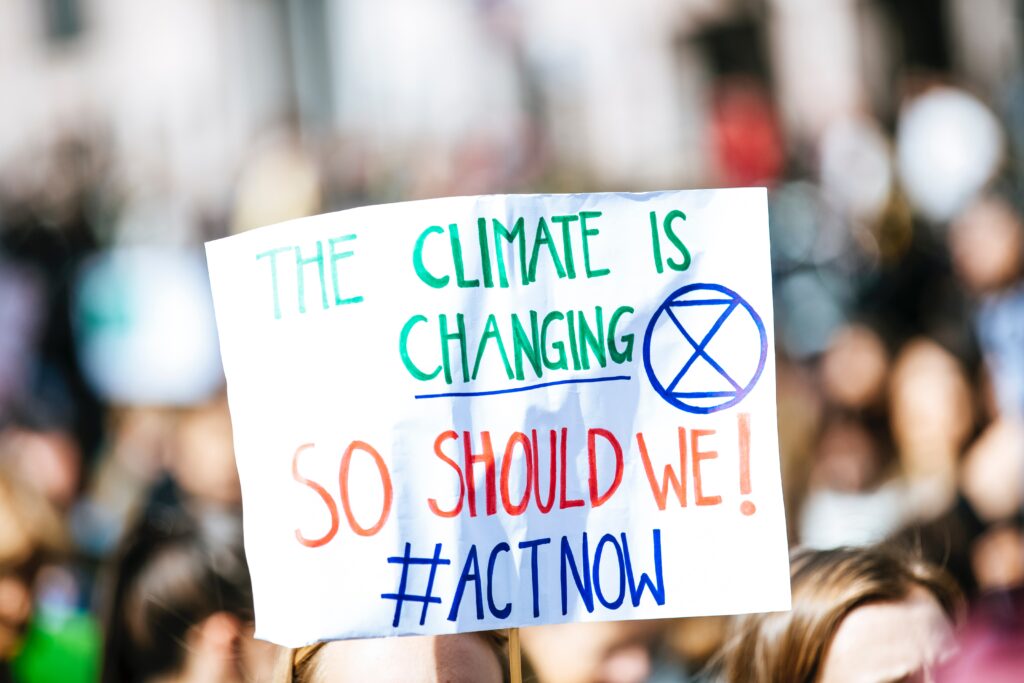by Timothy John Bautista / April 26, 2022

An often overlooked aspect of the climate crisis is its impact on human health. According to WHO, more than 13 million people die each year due to avoidable environmental factors.
Outbreaks of infectious diseases, trauma, injury, heat strokes, malnutrition and undernutrition from food shortages are all due to the effects of the climate crisis.
Extreme weather events like forest fires, intense rainfall, droughts, and rise in temperature result in death, displacement, and trauma, ultimately impacting the health and livelihood of the people.
Wildfires cause suffocation and burns. Extreme heat can lead to symptoms Heat strokes can occur at temperatures above 40C, that can lead to headaches, confusion, tiredness, vomiting, organ failure and even hospitalization.
Unprecedented floods put 2 billion people at risk of contracting Dengue and other emerging infectious diseases. It can also cause drowning, poisoning, disruption to health services, forced displacement, and shortage of clean water.
Sanitation and access to clean water and air play an important role in our health and well-being. According to WHO, the lack of access to clean water has led 829,000 people to develop diarrhea every year. Common climate-related deaths like malaria are also commonplace.
3.6 billion people around the world lack access to clean toilets. Untreated human waste degrades the ecosystem. Sewage waste and chemicals pollute the environment by entering the groundwater.
It is estimated that 90 percent of people breathe unhealthy levels of air pollution brought about by burning fossil fuel. In the southeast asian region, 2.4 million deaths occur due to air pollution.
Toxic compounds like arsenic, lead, nitrates, and sulfates lodge and overcome in the respiratory system of humans potentially leading to cancer. Poor air quality causes heart disease as well. Circulating compounds increase blood pressure by constricting blood vessels to eventually cause heart attack or even stroke.
Nitrogen dioxide pollution in particular can aggravate asthma. Long term air pollution also weakens our immune system leading to increased susceptibility to other respiratory diseases. See more
Household air pollution brought about by using kerosene lamps, firewood and coal stoves also pose a risk of developing the same diseases. 4 million people die every year due to exposure to air pollutants in their homes. See more
According to the WHO Framework Convention on Tobacco Control, the effects of tobacco production on our environment is often left undiscussed. Tobacco smoking is a well-investigated risk factor for heart, and lung diseases and at least 50 compounds found in a single cigarette are known carcinogens.
Tobacco manufacturing consumption, and disposal all have detrimental effects not only on human health but also the environment. Tobacco farming, in its water intensive process, causes dispersion of chemicals in nearby waterways.
Cigarette production also requires cutting down 600 million trees to produce 6 trillion cigarettes every year. Cigarette butts are the most widespread plastic waste in the world.
Cigarette butts are broken down to microplastics that take years to degrade and become major contaminants enough to cause short term toxicity to freshwater and marine organisms.
Nutrition is also severely affected by the climate crisis. Crop failures have resulted in food shortages in some parts of the world.
On the other hand, changing food habits and unhealthy lifestyles in bigger habitation areas have led to the emergence of life-threatening non-communicable diseases. In the southeast asian region, 9.2 million deaths are due to these lifestyle diseases.
Health promotion for well-being, equity in health services and sustainable development can halt the threat of the climate crisis. According to WHO, less than two percent of multilateral climate finance are allocated towards health projects. See more
More countries need to come together to build economies based on fairness and promoting well-being instead of a profit driven system. An example of these are Bhutan’s gross national happiness index, New Zealand’s allocating budget on human health, UAE’s happiness agenda, and Finland’s health in all policies approach.

The WHO has published a 6-step manifesto that will help the world move forward to a greener and more sustainable future:
- Cherishing and protect the natural world
- Investing to life-saving resources like clean water and and clean energy healthcare facilities
- Transitioning to renewable energy source
- Switching to healthy and sustainable food systems
- Creating green and healthy cities
In our own little ways, we all have a part to play in solving the climate crisis.